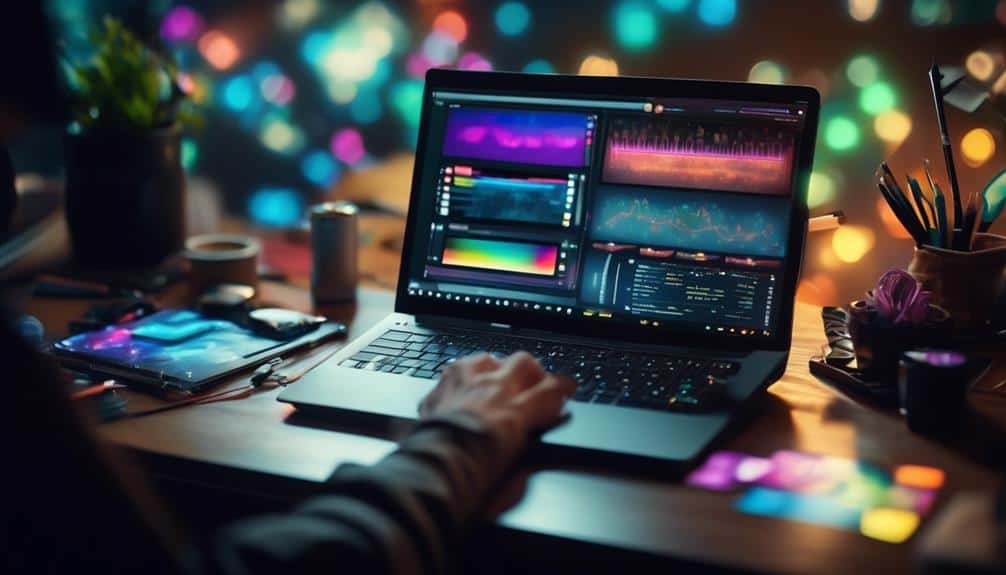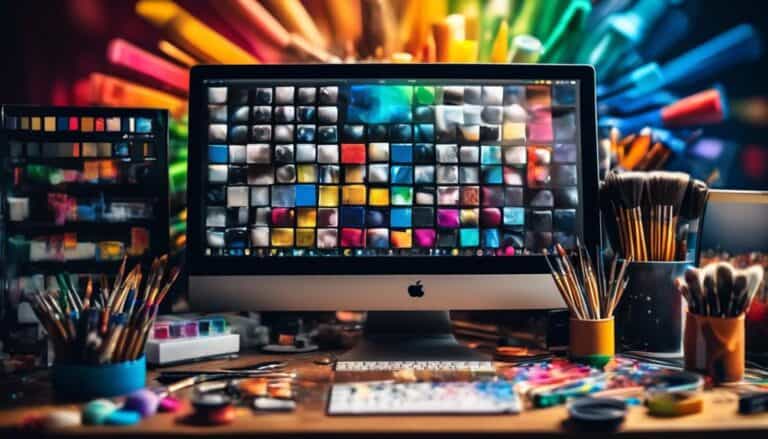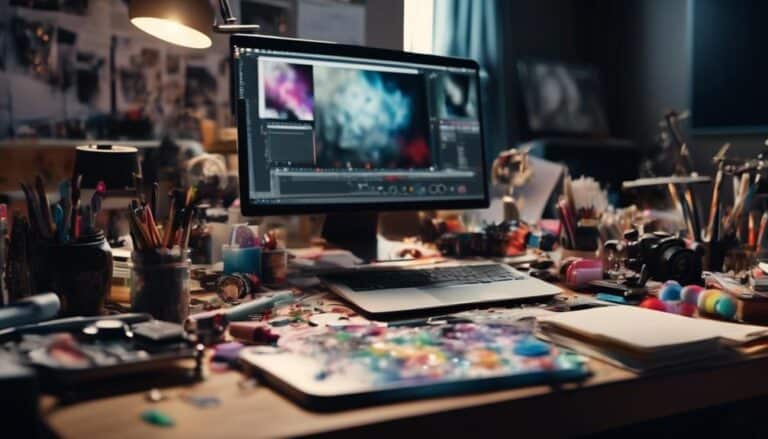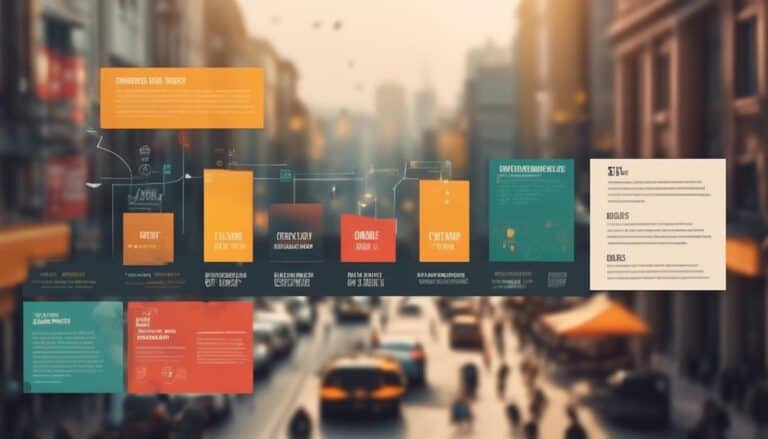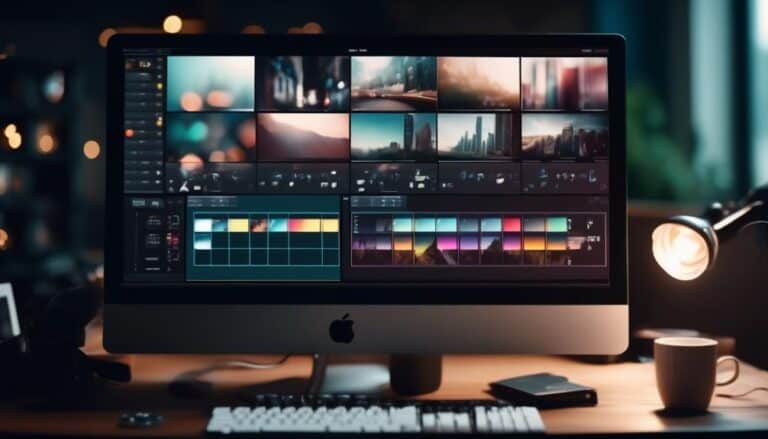Creating Stunning Visuals: A Beginner’s Guide to User-Friendly Design Software
Imagine design software as a blank canvas awaiting the stroke of your creativity. As you navigate through the realms of user-friendly tools and features, a world of possibilities emerges at your fingertips.
Embracing the journey of visual creation is akin to embarking on an adventure where each click and drag unveils a new facet of your artistic prowess. Mastering the art of design software not only empowers you to bring your ideas to life but also opens doors to a realm where imagination meets functionality.
Discover how to harness the potential of design software to craft stunning visuals that captivate and inspire.
Key Takeaways
- Importance of prioritizing user-friendly interfaces for a seamless creative process
- Utilization of templates for quick designs to enhance efficiency and maintain consistency
- Understanding color theory for impactful visuals and conveying messages effectively
- Experimenting with design enhancement techniques like blending modes and creative filters for captivating results
Understanding User-Friendly Design Software
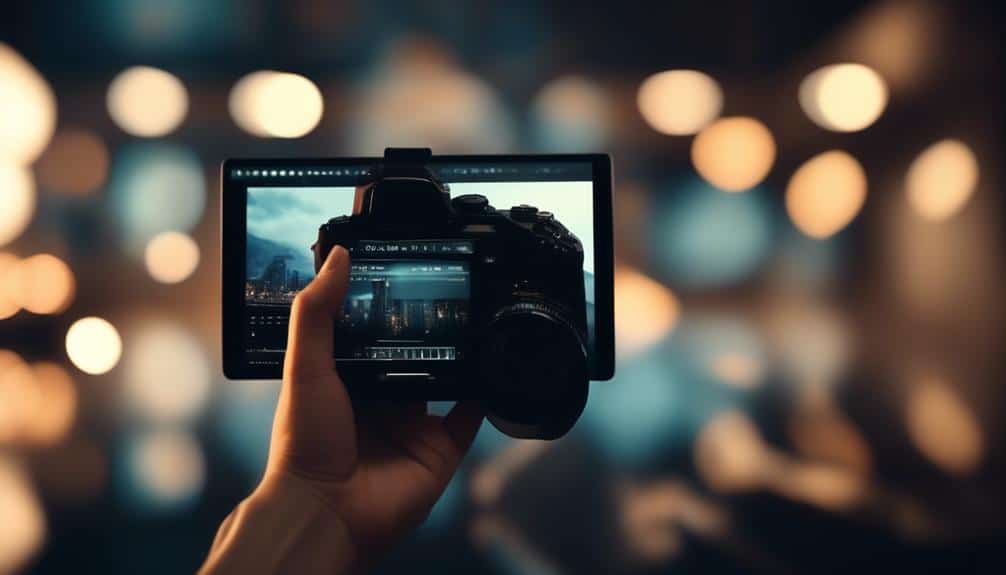
When diving into the world of design software, you'll quickly realize the importance of user-friendly interfaces for a seamless creative process. Design software comparison is essential to find the right fit for your needs. Some software may offer more advanced features, while others focus on simplicity. Before making a choice, consider your familiarity with graphic design principles and how customizable the user interface is.
User interface customization plays a vital role in enhancing your workflow. Being able to arrange tools and panels to suit your preferences can significantly impact your efficiency and overall experience. Additionally, it's crucial to ensure that the design software is compatible with your operating system and other tools you frequently use. This compatibility will prevent any potential issues and allow for a smoother transition between different programs.
Exploring Basic Design Tools
Now, let's tackle the exciting world of basic design tools.
You'll discover tips for selecting the right tools, get a good look at essential features, and dive into hands-on exercises to boost your skills.
Get ready to unleash your creativity and bring your design visions to life!
Tool Selection Tips
Selecting the right basic design tools is crucial for creating visually appealing and professional-looking designs. When comparing tools, prioritize user experience. Opt for software that offers a seamless design workflow, allowing you to easily navigate through different graphic elements. Consider the learning curve of each tool – opt for ones that are intuitive and user-friendly.
Look for features like drag-and-drop functionality, customizable templates, and a variety of editing options to enhance your creativity. Remember, the goal is to find tools that empower you to bring your design ideas to life effortlessly. Experiment with different options to see which tool aligns best with your design style and workflow preferences.
Your creativity will flourish when you find the perfect fit.
Essential Features Overview
Essential Features Overview
To unleash your design potential, focus on harnessing the essential features of basic design tools that amplify your creativity. Dive into the world of design with confidence by exploring these key elements:
- Intuitive Interface: Simplifies your workflow, making it a breeze to navigate and access tools efficiently.
- Customizable shortcuts for speedy design process.
- Versatile Brush Tools: Experiment with various brush styles and sizes to bring your ideas to life seamlessly.
- Pressure sensitivity for nuanced strokes.
- Layer Functionality: Organize your design elements effectively and experiment with advanced techniques like blending modes for striking visual effects.
Let these features be your guiding light as you embark on your journey of creative inspiration.
Hands-On Practice Exercises
Embark on an exciting journey of discovery and creativity as you delve into hands-on practice exercises exploring basic design tools. To enhance your skills and confidence, engage in these fun design exercises to unleash your artistic potential. Below is a table with five practice challenges to ignite your creativity and sharpen your design skills.
| Design Exercise | Description |
|---|---|
| Logo Creation | Craft a unique logo for a fictional company. |
| Poster Design | Design an eye-catching event poster. |
| Social Media Graphic | Create a visually appealing social media post. |
| Website Mockup | Design a homepage layout for a blog site. |
| Business Card Layout | Develop a sleek and professional business card. |
Leveraging Templates for Quick Designs
Ready to level up your design game?
Templates are your secret weapon for effortlessly customizing designs, maintaining a consistent aesthetic, and saving precious time.
Say goodbye to starting from scratch – templates are here to streamline your creative process like a pro!
Quick Template Customization
Utilize pre-made templates to swiftly customize your designs with a professional touch.
- Find Your Style: Explore different template options to discover what resonates with your vision.
- Experiment with color schemes and fonts to personalize the template to suit your brand.
- Add Unique Elements: Incorporate your creativity by tweaking images, shapes, or text placements.
- Use design elements such as gradients, overlays, or textures to enhance the template.
- Stay Consistent: Maintain a cohesive look by ensuring that your customizations align with your overall design theme.
- Apply your brand colors and logo consistently throughout the template for a polished finish.
Design Consistency Maintenance
As you maintain your design consistency through leveraging templates for quick designs, ensure that your customized elements seamlessly blend with your brand aesthetic.
Consistency is key in creating a visually appealing and professional look. By using templates as a foundation, you can easily insert your unique elements while keeping the overall design coherent.
Remember to stick to your brand colors, fonts, and styles to reinforce your visual identity. Templates offer a convenient way to streamline your design process while upholding a cohesive visual language across all your materials.
Whether it's for social media posts, presentations, or marketing materials, maintaining design consistency through templates will help you create a polished and recognizable brand image.
Time-Saving Design Solutions
To expedite your design process and enhance efficiency, consider harnessing the power of templates for swift and polished designs.
- Templates offer efficient workflows by providing a solid foundation for your designs, saving you time on starting from scratch.
- They enable you to focus on the creative aspects of your project rather than spending time on repetitive tasks.
- Utilizing templates acts as creative shortcuts, allowing you to explore different design styles and layouts quickly.
- You can easily customize pre-made templates to suit your needs, giving you more freedom for experimentation.
- Templates help maintain design consistency across your projects, ensuring a cohesive look without the need for manual adjustments.
Embrace templates as your design allies for a smoother and more productive workflow.
Mastering Color Theory for Impactful Visuals
Enhance your visual creations by understanding the powerful impact of mastering color theory. Delve into the realm of color psychology to evoke specific emotions and reactions from your audience. By grasping the fundamentals of color blending and harmony, you can create visuals that captivate and resonate with viewers on a deeper level.
Let's break down the key components of color theory:
| Color Theory Elements | Description |
|---|---|
| Color Psychology | Utilize colors to evoke emotions and convey messages effectively. Understanding the psychological impact of colors can help you create visuals that resonate with your audience. |
| Color Blending | Learn how different colors interact with each other to create visually appealing combinations. Experiment with various color schemes to achieve harmony in your designs. |
| Color Harmony | Discover how to balance colors to create a sense of unity and coherence in your visuals. By mastering color harmony, you can ensure that your designs are visually pleasing and impactful. |
Mastering color theory is a powerful tool in your design arsenal, enabling you to create visuals that leave a lasting impression.
Enhancing Images With Editing Features

Enhancing Images With Editing Features
Unlock the potential of your images through the transformative capabilities of editing features. Dive into a world of endless creativity as you explore advanced blending techniques and unleash the power of creative filters.
Here's how you can take your images to the next level:
- Advanced Blending Techniques
- Seamlessly blend multiple images to create stunning visual effects.
- Experiment with layer masks to control the transparency of different elements.
- Utilize blending modes to achieve unique and captivating results.
- Creative Filters
- Add artistic flair to your images with a wide range of filter options.
- Enhance textures and add depth with filters like blur, sharpen, and noise.
- Transform your photos into works of art with stylized filters that evoke different moods and aesthetics.
With these editing features at your fingertips, you have the freedom to elevate your images and bring your creative vision to life. Let your imagination soar as you explore the endless possibilities of image enhancement.
Incorporating Text and Typography Effectively
Discover the impactful fusion of text and imagery to elevate your designs to new heights. When it comes to incorporating text and typography effectively, mastering font pairings and establishing visual hierarchy is key. By utilizing complementary fonts that work harmoniously together, you can create a cohesive and aesthetically pleasing design. Experiment with different font styles to find the perfect combination that enhances your message.
Consider text alignment and spacing to ensure readability and visual appeal. Proper alignment guides the reader's eye smoothly across the content, while adequate spacing between letters, words, and paragraphs improves overall legibility. Striking the right balance between these elements can make a significant difference in the overall look and feel of your design.
Tips for Effective Text and Typography:
| Font Pairings | Visual Hierarchy |
|---|---|
| Try contrasting serif and sans-serif fonts for a dynamic look | Establish a clear hierarchy through font size, weight, and color |
| Experiment with script fonts for headings paired with clean, simple body fonts | Use typography to guide the viewer's attention and emphasize important information |
Utilizing Layers for Depth and Dimension

Delve into the art of layering to add depth and dimension to your designs, creating visual interest and complexity. When utilizing layers in your design software, consider the following tips to enhance your creations:
- Layer Organization
- Arrange your layers logically to streamline your workflow and keep your design organized.
- Use folders to group related layers together, making it easier to manage complex designs.
- Label your layers descriptively to quickly identify and locate specific elements.
- Creating Shadows
- Experiment with different shadow effects to add a sense of depth and realism to your design.
- Adjust the opacity and blur of your shadows to achieve the desired level of subtlety or drama.
- Utilize layer blending modes to seamlessly integrate shadows with your design elements.
Exporting and Sharing Your Masterpieces
As you finalize the intricate details of your design layers, the next step is to seamlessly export and share your masterpieces with the world. When it comes to exporting, most design software offers a variety of file formats like PNG, JPEG, or PDF. Choose the format that best suits your needs, ensuring your visuals remain crisp and vibrant.
Now, onto sharing options. With just a few clicks, you can post your creations on social media platforms, send them via email, or even create a shareable link. Embrace the freedom to showcase your work wherever you please. Additionally, some software provides collaboration tools, allowing you to invite others to view or edit your designs in real-time. This fosters creativity and teamwork, making the design process more interactive and dynamic.
Frequently Asked Questions
Can User-Friendly Design Software Be Used on Mobile Devices?
Yes, user-friendly design software can be used on mobile devices. While mobile compatibility may present creative constraints due to smaller screens, many design software options offer mobile versions for designing on-the-go, ensuring flexibility and convenience.
How Can I Ensure That My Designs Are Accessible to Individuals With Visual Impairments?
To ensure inclusive design and accessibility, consider design considerations for individuals with visual impairments. Incorporate high contrast colors, alternative text for images, and screen reader compatibility. By prioritizing accessibility, your designs can reach a wider audience.
Are There Any Specific Design Software Tools That Are Better Suited for Creating Animations or Interactive Designs?
For animations or interactive designs, consider graphic software like Adobe After Effects or web tools such as Animate CC. Graphic software is great for dynamic visuals, while web tools excel in creating interactive elements. Explore and experiment freely!
How Can I Stay Updated on the Latest Design Trends and Techniques When Using Design Software?
To stay updated on the latest design trends and techniques, immerse yourself in the design community. Seek design inspiration from creative workshops, engage in trend forecasting, and connect with fellow creatives. Stay curious and open to new ideas.
What Are Some Tips for Collaborating With Others on Design Projects Using User-Friendly Design Software?
When collaborating on design projects using user-friendly software, focus on remote collaboration to enhance teamwork. Emphasize project management for efficiency. Seek design feedback and maintain clear team communication to ensure a cohesive and successful outcome.
Conclusion
Now that you've dived into the world of user-friendly design software, you're equipped with the tools and knowledge to create stunning visuals. From exploring basic design tools to mastering color theory and incorporating text effectively, you're on your way to creating impactful designs.
Remember to leverage templates, enhance images, and utilize layers for depth. With practice and creativity, you'll be exporting and sharing your masterpieces in no time.
Keep designing and let your creativity shine!
